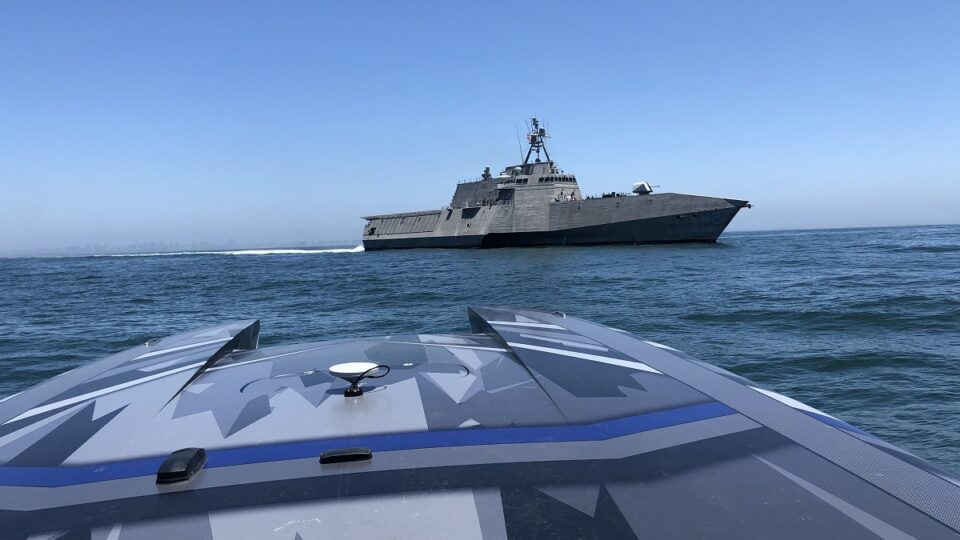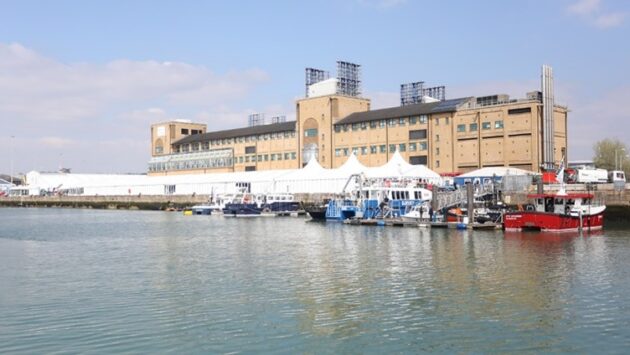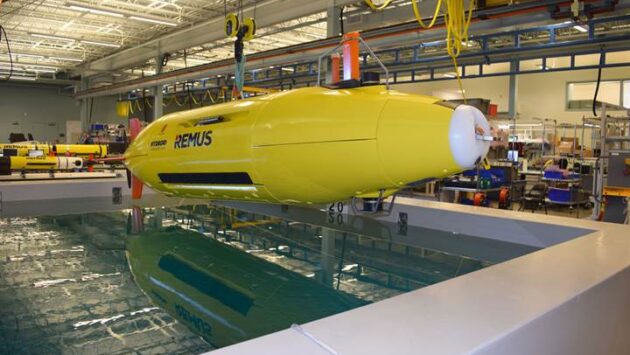Leading a Mine Warfare Renaissance with Tested and Proven Technologies
Leading a Mine Warfare Renaissance with Tested and Proven Technologies
Replacing RHIB Technology with Performance Beyond Capability
Many navies have the requirement to operate in the littorals close to shore, often on a coastline that the adversary defends with mines. That is one of the reasons why, over the past several years, in a series of U.S. Navy and Marine Corps events, operators have field-tested wide range of emerging technologies, many of them adaptable to the MCM mission.
One of the technologies that performed well was the MANTAS unmanned surface vehicle (USV). The MANTAS was scaled-up from a six-foot, to eight-foot, to twelve-foot version. During Exercise Valiant Shield, MANTAS was tasked with re-supply mission, carrying cargo to the troops ashore. As a result of that mission success, U.S. Navy and Marine Corps officials asked MANTAS’ manufacturer, MARTAC Inc., to scale-up the MANTAS further and design a thirty-eight-foot (11-metre) version.
It is this USV that can be combined with surface and subsurface mine-hunting and mine-neutralising equipment to provide an over-the-horizon MCM capability that takes the sailor out of the minefield and provides a potential solution for this challenging mission. While there are any number of USVs and UUVs that the U.S. Navy is testing, leveraging one that has been thoroughly wrung out for hundreds of hours during years of Navy, Marine Corps and other Service exercises, experiments, and demonstrations provides the most viable platform for a comprehensive MCM capability.
The essential building block for a commercial-off-the-shelf technology MCM solution is a scaled-up version of the twelve-foot MANTAS high-speed catamaran proven in many trials. This USV—nicknamed the T38—is virtually identical in size to an eleven-meter RHIB carried by many naval ships. The T38 can operate in up to sea state five, has a cruise speed significantly greater than that of an eleven-meter RHIB and a range four times greater than the RHIB.
One of the most important attributes of this MANTAS is the fact that the T38 has an aft-mounted twin tow station which can house both a mine-hunting sonar system and a mine neutralisation system Remotely Operated Vehicle (ROV). These towed subsystems are installed on two rails aft. The catamaran hull enables the MANTAS to conduct an angled submergence of the stern tow station.
With the T38 as the essential building block in providing an autonomous MCM solution, there are a number of commercially available mine-hunting sonar systems and ROVs that can be deployed aboard the MANTAS. Many of these are being used today by NATO nations and have been used extensively in mine clearing exercises and other operations. Thus, moving forward with a comprehensive commercial-off-the-shelf (COTS) autonomous MCM solution built around the T38 does not present a difficult engineering challenge.
Outside observers have noted the advantages of using unmanned platforms to deal with the mine countermeasures challenge, with one analyst, Andrea Daolio, noting: “Unmanned systems and new technologies can greatly help the U.S. Navy in the MCM task. Unmanned systems can greatly help MCM operations in the air and on the surface. A fully autonomous large fleet of inexpensive unmanned UUVs and USVs, operating together in a “formation manoeuvring” sweep scenario could sweep large portions of the sea while avoiding all risk to sailors.”
Given the compelling need to creatively apply new, innovative technologies to address the operational and tactical challenges posed by mines, as well as the need to expand the use of unmanned systems to tackle MCM challenges, the ability to meet this need with commercial-off-the-shelf hardware and software—and not wager on emerging technologies that will take years to develop, mature and field—should be a priority for naval planners.
The prototype T38 was operated extensively during the U.S. Navy’s Trident Warrior exercise. For two weeks, Navy officials had the opportunity to evaluate this unmanned surface vehicle from “stem to stern.” Some of the attributes they found most compelling were the T38’s cruise speed of 25 knots and burst speed of 80 knots, as well as its ability to operative for up to eight days without refuelling. These same officials also noted that with a max payload weight of 2,000kg the T38 can easily carry and deploy commercially available mine-hunting sonar systems and ROVs for mine neutralisation.
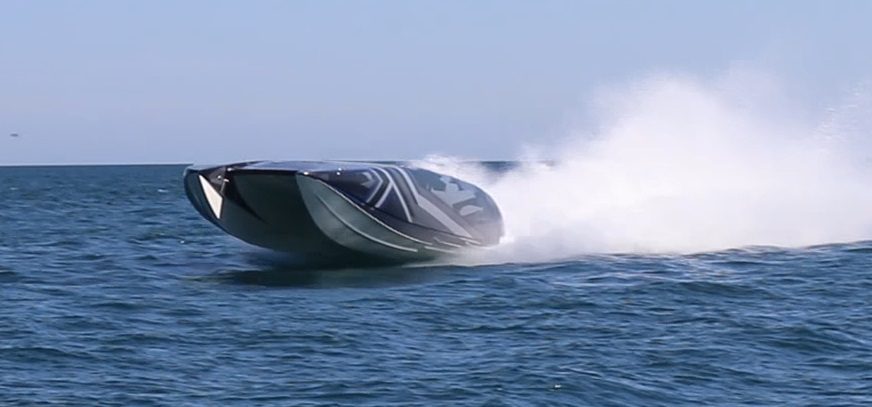 |
| MANTAS T38 (11m) USV has burst speeds up to 80 kts, cruise speeds up to 50 kts and ranges from 600 to 1800 nautical miles or more. |
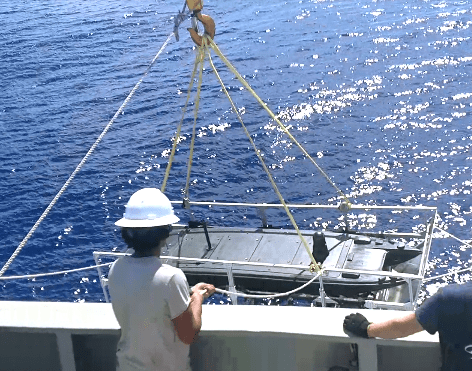 |
| MANTAS T12 USV launching in cradle from USN ship. |
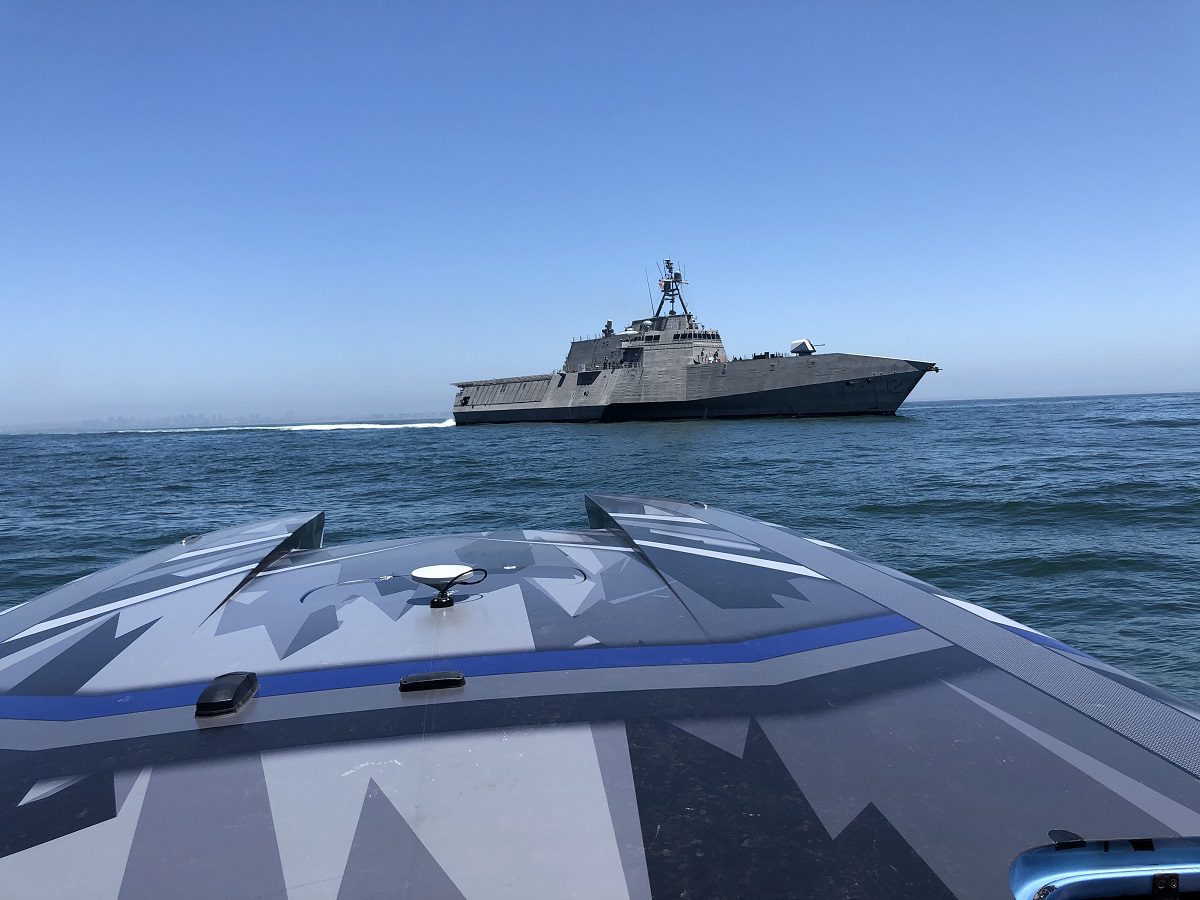 |
| A MANTAS T38 USV during exercise Trident Warrior ’20 off San Diego observes a Littoral Combat Ship. The T38 is virtually identical in size to an eleven-meter RHIB carried by many naval ships. The T38 can operate in up to sea state five, has a cruise speed significantly greater than that of an eleven-meter RHIB and a range four times greater than the RHIB. |
 |
| A single MANTAS can be expertly, rapidly, and safely tasked to perform Fast Intercept Attack Craft (FIAC), Mine Counter Measures (MCM), Intelligence, Surveillance, Reconnaissance (ISR), or Electronic Warfare (EW) missions. |

